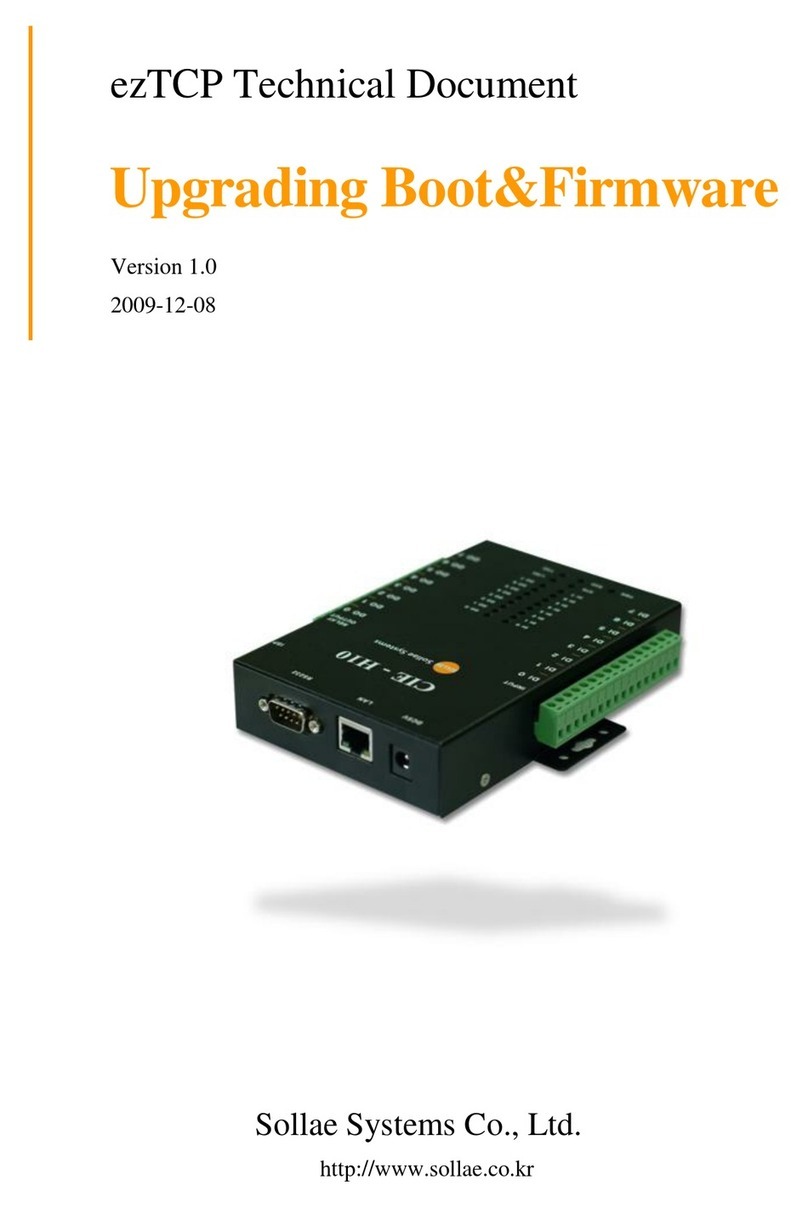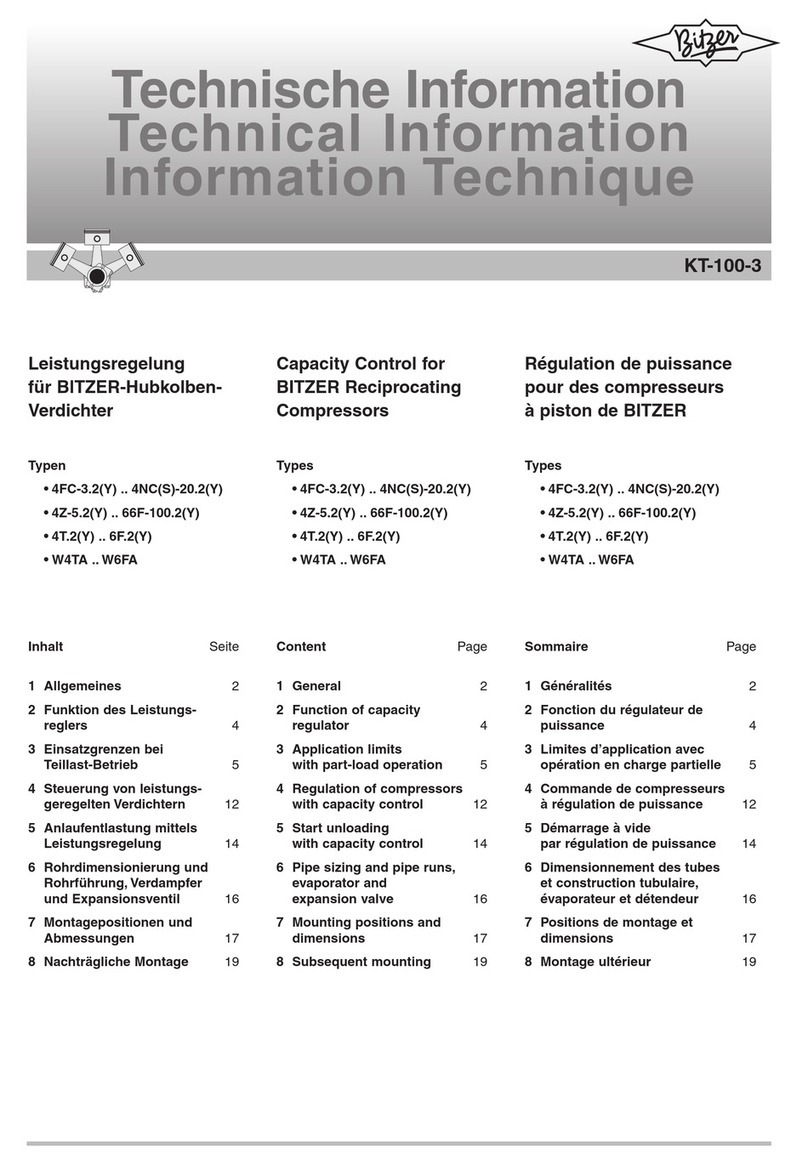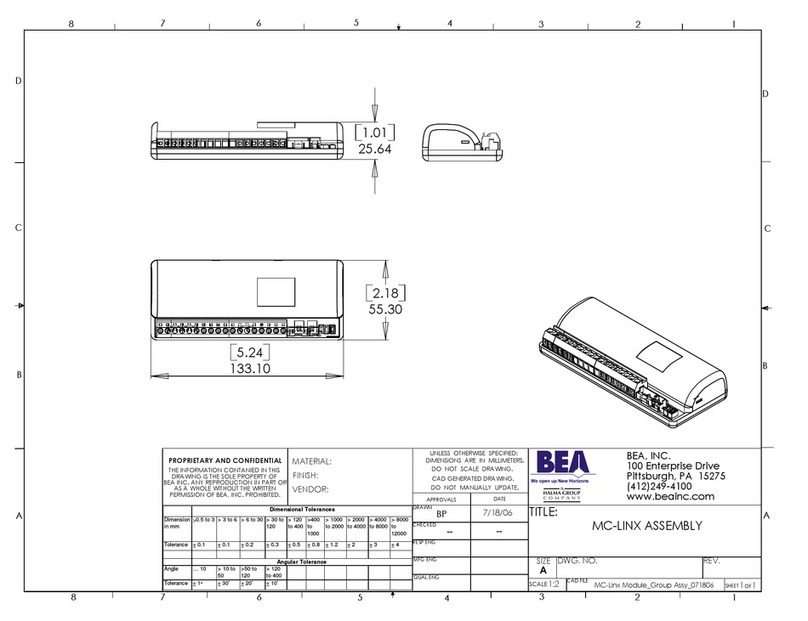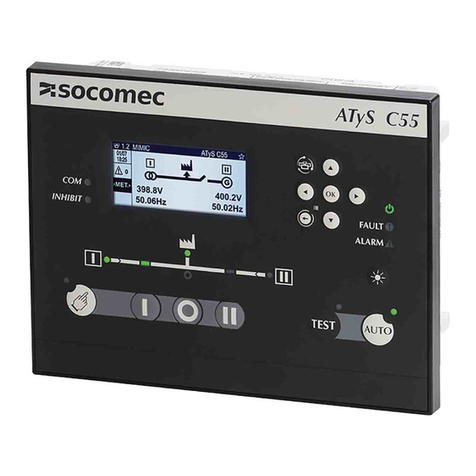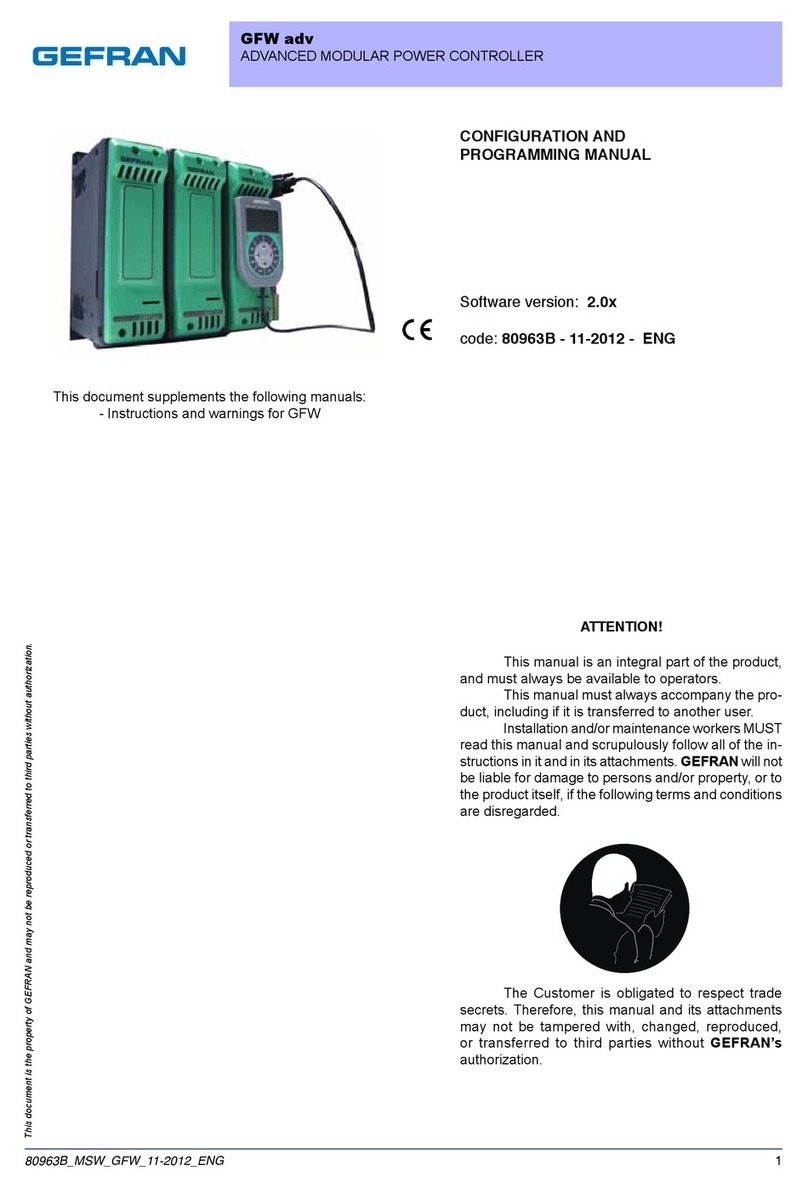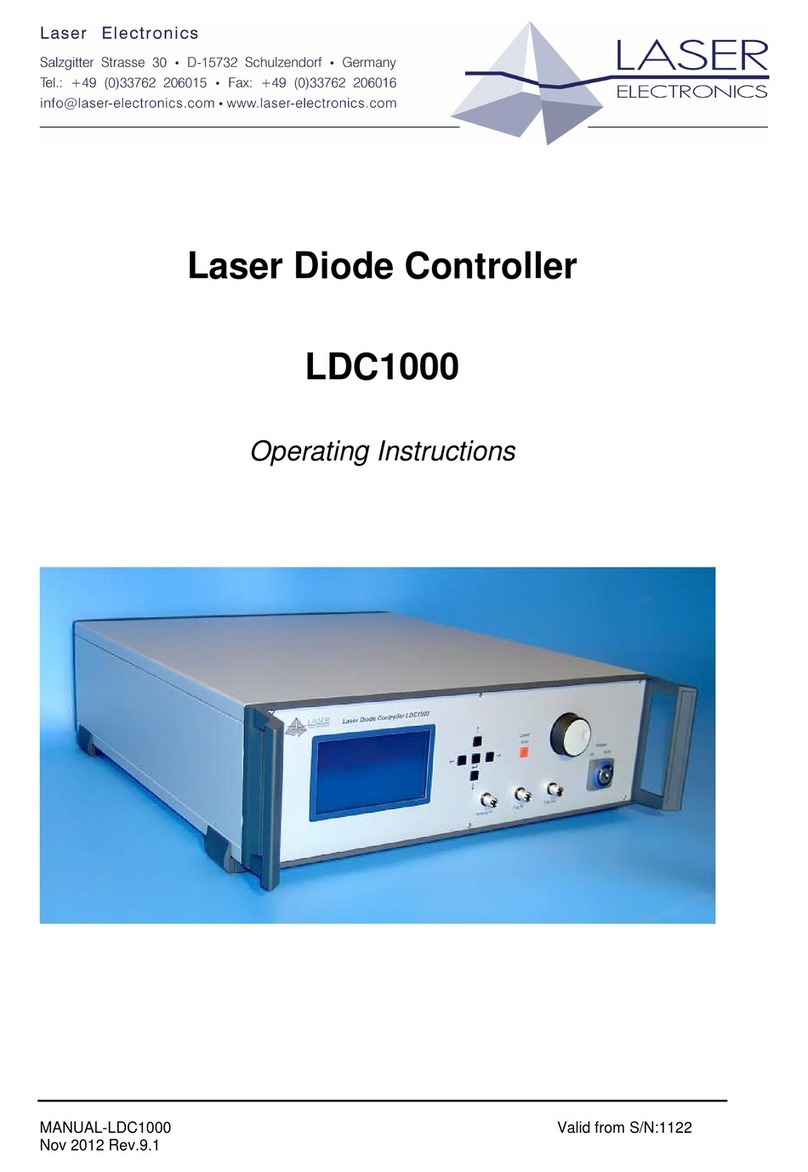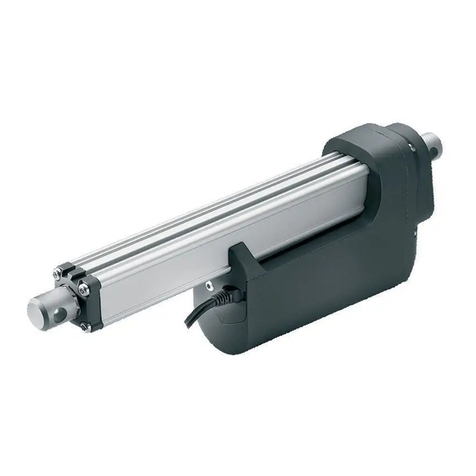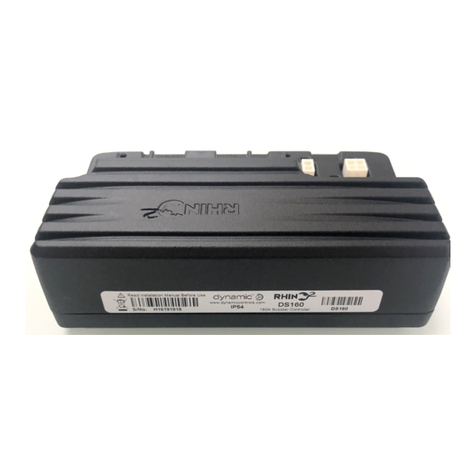Riverside Hydronics TempTrac User guide

Page 1/ 24 34-81 10/2013
SERVICE & SETUP MANUAL
BOILER
ELECTRONIC CONTROLLER
Riverside Hydronics, LLC • 3220 Galvez Ave • Fort Worth, Texas 76111 • 800-990-5918

Page 2/ 24 34-81 10/2013
INDEX
1. TECHNICAL DATA_________________________________________________________________ 3
2. WIRING DIAGRAMS________________________________________________________________ 3
3. DISPLAY AND INTERFACE__________________________________________________________ 4
3.1 KEYBOARD __________________________________________________________________ 4
3.2 LED ICON LEGEND____________________________________________________________ 5
3.3 UPPER LED READOUT (RED) ___________________________________________________ 6
3.4 LOWER LED READOUT (YELLOW) _______________________________________________ 6
3.5 TO SET THE CURRENT TIME AND DAY (24 HOUR CLOCK) ___________________________ 6
3.6 TO SET THE ENERGY SAVINGS TIME ____________________________________________ 7
3.7 TO SET THE MODULATION OUTPUT MANUALLY ___________________________________ 7
3.8 HOW TO SEE THE WORKING HOURS OF RELAY OUTPUTS __________________________ 7
3.9 HOW TO RESET THE WORKING HOURS OF RELAY OUTPUTS _______________________ 7
4. PROGRAMMING___________________________________________________________________ 8
4.1 SET POINTS PROGRAMMING ___________________________________________________ 8
4.2 HOW TO ENTER AND CHANGE PARAMETERS IN THE “pr1” LIST (NOT PASSWORD
PROTECTED)_________________________________________________________________ 8
4.3 HOW TO ENTER PARAMETERS IN THE “Pr2” LIST (PASSWORD PROTECTED) __________ 8
4.4 HOW TO CHANGE THE PARAMETER VALUES IN “Pr2” ______________________________ 9
4.5 HOW TO LOCK THE KEYBOARD_________________________________________________ 9
5. PARAMETERS ___________________________________________________________________ 10
6. RELAY OUTPUTS ________________________________________________________________ 14
6.1 OUTPUT SETUP AND SPECS __________________________________________________ 14
6.2 OUTPUT 1 CALL FOR HEAT (1on=rEG)___________________________________________ 14
6.3 OUTPUT 2 2ND STAGE (oS2=Std 2on=rEG) _______________________________________ 15
6.4 OUTPUT 2 AS ALARM RELAY (oS2=AL, 2ON=REG)_________________________________ 15
6.5 OUTPUT 3 TEMPERATURE PROTECTION (3on=rEG) _______________________________ 16
6.6 OUTPUT 3 ALTERNATE SET POINT _____________________________________________ 17
7. MODULATION OUTPUT____________________________________________________________ 18
8. MODULATION BUFFER____________________________________________________________ 19
9. DYNAMIC RESET OF St1 __________________________________________________________ 19
10. WARM WEATHER SHUT DOWN_____________________________________________________ 19
11. HOT KEY PROGRAMMING _________________________________________________________ 20
12. ASSIGNING TEMPTRAC® ADDRESS FOR MODBUS RTU _______________________________ 21
13. ALARMS ________________________________________________________________________ 22
13.1 DIGITAL INPUT ALARMS ______________________________________________________ 23
13.2 AUDIBLE ALARM_____________________________________________________________ 23
13.3 ALARM RECOVERY __________________________________________________________ 24

Page 3/ 24 34-81 10/2013
1. TECHNICAL DATA
Housing: Self-extinguishing ABS.
Case: Facia 100x64 mm; depth 76mm
Mounting: Panel mounting in a 56x72 mm panel cut-out with two screws. 3x2mm. Distance between the holes
40mm
Protection: IP20.
Frontal protection: IP65 with optional frontal gasket mod. RGW-V
Connections: Spade on connectors 6.3 mm for supply and relays and 4÷20mA-
Screw terminals block for probes, digital input
Power supply: 24Vac Class 2
Power absorption: 7VA max.
Display: Dual display
Relay outputs: 3 SPST relay contacts, 3A, 8A resistive load.
Other output: Audible alarm
4÷20mA modulation output
Inputs: 3 NTC probes
Digital inputs: 3 Dry Contact
Hot key facility for fast programming
Serial output: TTL standard
Communication protocol: Modbus - RTU
Data storing: On non-volatile memory (EEPROM).
Internal clock back-up: 24 hours
Kind of action: 1B.
Pollution grade: Normal
Software class: A.
Operating temperature: 32÷140°F (0÷60 °C)
Storage temperature: -13÷140°F (-25÷60 °C)
Relative humidity: 20÷85% (no condensing)
Measuring and regulation range: NTC probe: -58÷230°F (-40÷110°C)
Resolution: 1°F or 1 °C (selectable).
Accuracy (ambient temp. 77°F): ±1 °F ±1 digit
2. WIRING DIAGRAMS

Page 4/ 24 34-81 10/2013
3. DISPLAY AND INTERFACE
3.1 KEYBOARD
SET
-Displays and modifies the temperature set points.
-In programming mode it selects a parameter or confirms an operation.
UP
-Displays and modifies the energy saving (Night Time Setback) settings.
-In programming mode it browses the parameter codes or increases the displayed value.
DOWN
-Displays the working hours of the load relays.
-In programming mode it browses the parameter codes or decreases the displayed value.
CLOCK
-Changes lower display from inlet temperature to current time and day.
-To set the current time and day.
EXT
-Changes upper display between outlet temperature, inlet temperature, outdoor reset temperature,
modulation % or the temperature difference between the inlet and outlet temperatures.
-In programming mode it sets the modulation output (4-20mA). (Password is required (321).
ON/OFF -Switches the control ON or OFF.
UPPER LED READOUT
LOWER LED READOUT

Page 5/ 24 34-81 10/2013
KEY COMBINATIONS
+ To lock and unlock the keyboard.
+
To enter the programming mode.
+ To exit the programming mode.
3.2 LED ICON LEGEND
LED MODE Function
ON Temperatures are displayed in degrees Fahrenheit.
ON Temperatures are displayed in degrees Celsius.
Flashing Output 1 time delay. Output 1 will not energize until AC1 time delay expires OR i3F=Edi and
the remote enable/disable is in standby (disabled).
ON Output 1 relay is on. Spade contacts 4 & 5 are closed.
Usually this is the primary CALL FOR HEAT.
Flashing Output 2 time delay. Output 2 will not energize until AC2 time delay expires. (On 2-stage
units only)
Or oS2 is set to AL. (Output 2 is an alarm indicator and it is off.)
ON Output 2 relay is on or the AL2 alarm output is enabled. Spade contacts 6 & 7 are closed.
Flashing Output 3 time delay. Output 3 will not energize until AC3 time delay expires.
ON Output 3 relay is on. Spade contacts 8 & 9 are closed.
ON Modulation output signal is in manual control mode. Parameter PS4 should be set to nu for
automatic operation.
Or If dS1 or dS2 is set to display the modulation output value ANI.
Flashing Modulation is forced to value in i1S by digital input 1.
ON Modulation output signal is automatically controlled by temperature probe 1.
Flashing Modulation output time delay is activated. Modulation output will remain at 4mA until the AC4
time delay expires.
Or Modulation will remain in low fire until probe 2 is below TH4 by the amount of HY4.
Ext
ON The outside temperature is displayed (top or bottom display). See dS1 & dS2.
FLASHING Digital input 2 (alarm) is activated.
FLASHING Digital input 3 (alarm) is activated.
FLASHING When both and are flashing other safety interlocks such as low water cut-off or high
temperature limit may be in failure.
ON Lower LED display is displaying time clock.
Pr1 ON While in the Pr2 menu, signals that current the parameter is accessible in the Pr1 menu.
FLASHING ALARM signal (any alarm condition LA, HA, P1, P2, P3, AL2, AL3, Nn1, Nn2, Nn3).
FLASHING Programmed working hours limit is exceeded See oP1, oP2, oP3 & ou1, ou2, ou3.
ON Working hours are displayed in the lower LED display.
ES ON The Energy saving function is running This is a LED dot under the ES label top left.
PoF Pops Up Displayed when trying make a change, the Keypad is locked. See section 4.5.

Page 6/ 24 34-81 10/2013
3.3 UPPER LED READOUT (RED)
The default display of this readout is the temperature sensed at Probe 2, which is generally the supplied outlet
water temperature. Probe 2 may display the tank stored water temperature, flue gas temperature, ambient
temperature, remote tank, blended water temperature, etc., depending on the product and application. Refer to
your specific product’s Installation and Maintenance Manual and the supplied wiring drawing. The upper LED
readout can also be switched to display Probe 1 or 3(if used) or the modulation % or the temperature difference
between Probe 1 and 2. If set to display Probe 2, and Probe 2 is not utilized, the display will show “nu”.
By pressing and releasing the button once, the Upper LED will display the actual temperature sensed at
Probe 3. Probe 3 (if used) may display the flue gas temperature or outside ambient temperature, etc.,
depending on the product and application.
By pressing and releasing the button again, the Upper LED will display the modulation %. If the product is
a non-modulating product, the displayed valve should not be considered.
By pressing and releasing the button a third time, the Upper LED will display the difference between the
temperature sensed at Probe 2 (generally the outlet temperature) and the temperature sensed at Probe 1
(generally the inlet temperature).
To return to the default in the Upper LED readout, press the button to cycle back to the Probe 2
temperature.
All of the display information described above is available for monitoring through the optional MODBUS RTU
interface.
3.4 LOWER LED READOUT (YELLOW)
The default display of this readout is the temperature sensed at Probe 1, which is generally inserted into the
return inlet piping of the boiler. Probe 1 may display the tank stored water temperature, supplied outlet water
temperature, flue gas temperature, ambient temperature, remote tank or blended water temperature, etc.,
depending on the product and application. Refer to your specific product’s Installation and Maintenance
Manual and the supplied wiring drawing. The lower LED readout can also be switched to display Probe 2 or
3(if used) or the modulation % or the Time of Day.
By pressing and releasing the button once, the Lower LED display will show the Time of Day. Press again
to return to default display.
3.5 TO SET THE CURRENT TIME AND DAY (24 HOUR CLOCK)
1. Push and hold the button for more than 3 seconds. The LED ICON starts flashing and the “Hur” (hour)
parameter name is displayed in the Upper LED readout, its value is displayed in the Lower LED readout.
2. Pushing the or button alternates the LED readouts between the following:
“Hur” (hour) in the Upper readout and its value in the lower readout.
“Min” (minute) in the Upper readout, its value in the Lower readout.
“dAY” (day) in the Upper readout, its value in the Lower readout.
3. To adjust a value, press the button and the value in the Lower LED will start flashing. Change the value by
pressing the or buttons. When correct, press .
4. To exit push + or wait 15 seconds without pressing any buttons.
NOTE: This device recognizes Sunday as the first day of the week and Saturday as the last.

Page 7/ 24 34-81 10/2013
3.6 TO SET THE ENERGY SAVINGS TIME
1. Push the button for more than 3 seconds and the first parameter of the energy saving will be displayed.
2. Use and keys to browse them.
3. To change a value push key followed by or .
4. To exit, press and or wait 30s without pressing any key.
3.7 TO SET THE MODULATION OUTPUT MANUALLY
1. Push and hold the key for more than 3 seconds LED switches ON and the PS4 parameter is displayed
in the upper display, while the PAS label is shown in the lower display. The passkey will be required to view and
manually change the modulation % value. Passkey is “321”.
2. Release the key, and insert the password as described in the par. 4.3. The value of PS4 will be displayed in the
lower display. (nu) stands for not used. Return to this condition for automatic operation.
3. To adjust modulation manually, push the key, the value starts flashing. Then use or keys to
modified it.
4. To exit, press and or wait 30s without pressing any key.
NOTE: After a modification, it will be possible to enter the Modulation output setting without entering the
password for 10min. After this time you will be asked for the password again.
3.8 HOW TO SEE THE WORKING HOURS OF RELAY OUTPUTS
1. Push the key for more than 3 seconds, LED switches ON, the display 2 will show ou1 and the display 1
will show the working hours of the relay 1.
2. By pushing or keys, the working hours of other outputs are displayed.
3. To exit, press and or wait 30s without pressing any key.
3.9 HOW TO RESET THE WORKING HOURS OF RELAY OUTPUTS
1. To reset the working hours of a load enter Pr2 menu. See section 4.3.
2. Select the parameter: ou1 for the output 1 or ou2 for output 2 or ou3 for output 3.
3. Push the key, and the value will start flashing, use the key to decrease the value.

Page 8/ 24 34-81 10/2013
4. PROGRAMMING
4.1 SET POINTS PROGRAMMING
1. Push the key, the upper display will show the “St1”, while the lower display will show its value.
2. Use the and key to see the set point to be modified.
3. Push the key to modify the displayed value. It starts flashing.
4. To change it push the or keys.
5. Push the key to confirm the value and pass to the setting of next set point.
6. Repeat the operations for additional set points.
To exit: press and or wait 30s without pressing any key.
NOTE: Each point has a time out of 30 seconds. If no key is pressed within 30s the controller exits the set points
programming procedure.
NOTE: The set value is stored even when the procedure exits due to the 15 second expiration.
4.2 HOW TO CHANGE PARAMETERS IN THE “Pr1” LIST (NOT PASSWORD PROTECTED)
1. Enter the Programming mode by pressing the and key for 3s.
2. Select the required parameter. The name of the parameter is on the upper display and its value is on the lower
display.
3. Press the key: the value of the parameter will start blinking.
4. Use or to change the value.
5. Press to store the new value and move to the following parameter.
To exit: Press and and or wait 30s without pressing a key.
NOTE: The set value is stored even when the procedure exits due to the 15 second expiration.
4.3 HOW TO ENTER PARAMETERS IN THE “Pr2” LIST (PASSWORD PROTECTED)
1. Enter the “Pr1” level.
2. Press the DOWN key.
3. Select “Pr2” – “PAS” parameter and press the key.
4. The value ““0 - -” with a flashing zero is displayed.
Use or keys to input the security code in the flashing digit; confirm the figure by pressing .
5. The security code is “321”.
NOTE: each parameter in “Pr2” can be removed or put into “Pr1” (user level) by pressing +.
When a parameter is present also in “Pr1” the “Pr1” icon is on.

Page 9/ 24 34-81 10/2013
4.4 HOW TO CHANGE THE PARAMETER VALUES IN “Pr2”
1. Enter the Programming mode.
2. Select the required parameter with or keys.
3. Press the key and the value will start blinking.
4. Use or keys to change its value.
5. Press to store the new value and move to the next parameter.
To exit: Press and or wait 30s without pressing a key.
NOTE: the new programming is stored even if the procedure exits by time-out.
4.5 HOW TO LOCK THE KEYBOARD
1. Keep the and keys pressed together for more than 3 s.
2. The “PoF” message will be displayed and the keyboard is locked. At this point it is only possible to
view the set point. Any attempt to change a set point will display the “PoF” message.
3. Repeat step 1 to unlock the keyboard.
4. The “Pon” message will be displayed and the keyboard will be unlocked.

Page 10/ 24 34-81 10/2013
5. PARAMETERS
All the parameters can be set in:
-Pr1: immediately accessible menu.
-Pr2: password protected menu.
Label: The displayed label when using the Keypad.
Range: Indicates the possible values and units that can be set.
Firm Version: Firmware of the TempTrac control can be viewed in the rEL parameter.
Label Firm
Version Description Range
X÷YFromXtoYRev 0.3
Level Rev 0.5
Level
Hex
Modbus
Address
Base 0
Modbus
Command
Address
40000+
St1 0.3 & 0.5 Setpoint1LS1÷US1Pr1Pr10x300769
St2 0.3 & 0.5 Setpoint2LS2÷US2Pr1Pr10x301770
St3 0.3 & 0.5 Setpoint3LS3÷US3Pr1Pr10x302771
St5 0.3 & 0.5 Setpoint5Setpoint3alternate‐20÷70°FPr1Pr10x303772
HY1 0.3 & 0.5 DifferentialforSt1‐22÷22°FPr2Pr20x304773
LS1 0.3 & 0.5 Minimumsetpoint1‐40°F÷SETPr2Pr20x305774
US1 0.3 & 0.5 Maximumsetpoint1SET÷230°FPr2Pr20x306775
AC1 0.3 & 0.5 Anti‐shortcycledelayforoutput10÷30min.Pr2Pr20x307776
S2c 0.3 & 0.5 ConfigurationofSt2:dependentonSt1orindependentdiP;indPr3Pr20x308777
HY2 0.3 & 0.5 DifferentialforSt2‐22÷22°FPr2Pr20x309778
LS2 0.3 & 0.5 Minimumsetpoint2‐40°F÷St2Pr2Pr20x30A779
uS2 0.3 & 0.5 Maximumsetpoint2St2÷230°FPr2Pr20x30B780
AC2 0.3 & 0.5 Anti‐shortcycledelayforoutput20÷30min.Pr2Pr20x30C781
S3c 0.3 & 0.5 ConfigurationofSt3:dependentonSt1orindependentdiP;indPr2Pr20x30D782
HY3 0.3 & 0.5 Differentialforsetpoint3St3‐22÷22°FPr2Pr20x30E783
LS3 0.3 & 0.5 Minimumsetpoint3St3‐40°F÷St3Pr2Pr20x30F784
uS3 0.3 & 0.5 Maximumsetpoint3St3St3÷230°FPr2Pr20x310785
AC3 0.3 & 0.5 Anti‐shortcycledelayforoutput30÷30min.Pr2Pr20x311786
o3P 0.3 & 0.5 Probeselectionforoutput3Pb1/Pb2Pr2Pr20x312787
SSE 0.3 & 0.5 Setpointshiftforoutput3enabledisableNo;YesPr2Pr20x313788
HY5 0.3 & 0.5 Differentialforsetpoint5‐22÷22°FPr2Pr20x314789
Ac5 0.3 & 0.5 Anti‐shortcycledelayforoutput3alternatesetpoint0÷30min.Pr2Pr20x315790
AcA 0.3 & 0.5 TimedelaybetweentheSt3toSt5setpointshift0÷15min.Pr2Pr20x316791
ANALOGUE OUTPUT 4÷20mA (output 4)
S4c 0.3 & 0.5 ConfigurationofSt4:dependentonSt1orindependentdiP;indPr3Pr20x317792
St4 0.3 & 0.5 Analogueoutputsetpoint ‐100÷100°FPr2Pr20x318793
SR 0.3 & 0.5 Analogueoutputbandwidth‐100÷100°FPr2Pr20x319794
Th4 0.3 & 0.5 Outlet temperature threshold for forcing to 4ma the
analog output ‐40°F÷230°FPr2Pr20x31A795
HY4 0.3 & 0.5 Differentialforrestartworkingofanalogoutput‐45÷‐1°FPr2Pr20x31B796
Ac4 0.3 & 0.5 Anti‐shortcycledelayforoutput40÷30min.Pr2Pr20x31C797
PS4 0.3 & 0.5 Analogoutputpercentage(nu=101)0÷100,nuPr2Pr20x31D798
PP4 0.3 & 0.5 Analogoutputpercentagewithfaultprobe1(nu=101)0÷100,nuPr3Pr20x31E799
DYNAMIC RESET
tt 0.3 & 0.5 OutdoortemperaturethresholdfordynamicresetofSt1 ‐40÷230°FPr2Pr20x31F800
rr2 0.3 & 0.5 Outdoortemperaturebandwidth‐100÷100°FPr2Pr20x320801
rr1 0.3 & 0.5 MaximumshiftofSt1‐100÷100°FPr2Pr20x321802
tt2 0.3 & 0.5 Outdoortemperaturethresholdtoopenalltheloads ‐40÷230°FPr2Pr20x322803

Page 11/ 24 34-81 10/2013
Label Firm
Version Description Range
X÷YFromXtoYRev 0.3
Level Rev 0.5
Level
Hex
Modbus
Address
Base 0
Modbus
Command
Address
40000+
Ht2 0.3 & 0.5 Differentialforrestartworkingofcontroller‐45÷‐1°FPr2Pr20x323804
0.3 & 0.5 DIGITAL INPUTS
i1P 0.3 & 0.5 Digitalinput1polarityCL÷OPPr3Pr20x324805
i2P 0.3 & 0.5 Digitalinput2polarityCL÷OPPr2Pr20x325806
i2d 0.3 & 0.5 Digitalinput2alarmdelay0÷255min.Pr3Pr20x326807
i3P 0.3 & 0.5 Digitalinput3polarityCL÷OPPr2Pr20x327808
i3d 0.3 & 0.5 Digitalinput3alarmdelay0÷255min.Pr3Pr20x328809
0.3 & 0.5 DISPLAY
cF 0.3 & 0.5 Temperaturemeasurementunit°C÷°FPr3Pr20x329810
rES 0.3 & 0.5 Resolution(integer/decimalpoint)onlyfor°Cin÷dePr3Pr20x32A811
dS2 0.3 Defaultshowingfordisplay#2Top(red)Pb2,Pb3Pr2
0x32B812
dS2 0.5 Defaultshowingfordisplay#2Top(red)Pb3willdisplay
yellowEXT,AniwilldisplayyellowValve/MPb1,Pb2,Pb3,AnI Pr20x32B812
dS1 0.3 Defaultshowingfordisplay#1Bottom(Yellow)Pb1;tiMPr2
0x32C813
dS1 0.5 Defaultshowingfordisplay#1Bottom(Yellow)Pb3will
displayyellowEXT,AniwilldisplayyellowValve/M
Pb1,Pb2,Pb3,AnI,
TiMPr20x32C813
ALARMS
Alc 0.3 & 0.5 Temperaturealarmsconfiguration:dependentonSt1or
independentrE÷AbPr3Pr20x32D814
ALL 0.3 & 0.5 minimumtemperaturealarm,referredtoTP1‐40÷230°FPr2Pr20x32E815
Alu 0.3 & 0.5 MAXIMUMtemperaturealarm,referredtoTP1‐40÷230°FPr3Pr20x32F816
AFH 0.3 & 0.5 Differentialfortemperaturealarmrecovery 1÷45°FPr2Pr20x330817
ALd 0.3 & 0.5 Temperaturealarmdelay0÷255min.Pr2Pr20x331818
dAo 0.3 & 0.5 Delayoftemperaturealarmatstartup1=10mindisp
0.10÷23h50min.Pr2Pr20x332819
ANALOGUE INPUTS
oF1 0.3 & 0.5 Firstprobecalibration‐21÷21°FPr3Pr20x333820
P2P 0.3 & 0.5 SecondprobepresenceNo;YesPr2Pr20x334821
oF2 0.3 & 0.5 Secondprobecalibration‐21÷21°FPr3Pr20x335822
P3P 0.3 & 0.5 ThirdprobepresenceNo;YesPr2Pr20x336823
oF3 0.3 & 0.5 Thirdprobecalibration‐21÷21°FPr3Pr20x337824
TIME AND DATE
Hur 0.3 & 0.5 Currenthour0÷23Pr2Pr20x338825
Min 0.3 & 0.5 Currentminute0÷59Pr2Pr20x339826
dAY 0.3 & 0.5 CurrentdaySun÷SAtPr2Pr20x33A827
ENERGY SAVING TIMES
E1 0.3 & 0.5 EnergysavingstartonSunday0÷23h50min.‐nuPr2Pr20x33B828
S1 0.3 & 0.5 EnergysavingstoponSunday0÷23h50min.‐nuPr2Pr20x33C829
Sb1 0.3 & 0.5 SetbacktemperatureonSunday‐40÷40°FPr2Pr20x33D830
E2 0.3 & 0.5 EnergysavingstartonMonday0÷23h50min.‐nuPr2Pr20x33E831
S2 0.3 & 0.5 EnergysavingstoponMonday0÷23h50min.‐nuPr2Pr20x33F832
Sb2 0.3 & 0.5 SetbacktemperatureonMonday‐40÷40°FPr2Pr20x340833
E3 0.3 & 0.5 EnergysavingstartonTuesday0÷23h50min.‐nuPr2Pr20x341834
S3 0.3 & 0.5 EnergysavingstoponTuesday0÷23h50min.‐nuPr2Pr20x342835
Sb3 0.3 & 0.5 SetbacktemperatureonTuesday‐40÷40°FPr2Pr20x343836
E4 0.3 & 0.5 EnergysavingstartonWednesday0÷23h50min.‐nuPr2Pr20x344837
S4 0.3 & 0.5 EnergysavingstoponWednesday0÷23h50min.‐nuPr2Pr20x345838
Sb4 0.3 & 0.5 SetbacktemperatureonWednesday‐40÷40°FPr2Pr20x346839
E5 0.3 & 0.5 EnergysavingstartonThursday0÷23h50min.‐nuPr2Pr20x347840

Page 12/ 24 34-81 10/2013
Label Firm
Version Description Range
X÷YFromXtoYRev 0.3
Level Rev 0.5
Level
Hex
Modbus
Address
Base 0
Modbus
Command
Address
40000+
S5 0.3 & 0.5 EnergysavingstoponThursday0÷23h50min.‐nuPr2Pr20x348841
Sb5 0.3 & 0.5 SetbacktemperatureonThursday‐40÷40°FPr2Pr20x349842
E6 0.3 & 0.5 EnergysavingstartonFriday0÷23h50min.‐nuPr2Pr20x34A843
S6 0.3 & 0.5 EnergysavingstoponFriday0÷23h50min.‐nuPr2Pr20x34B844
Sb6 0.3 & 0.5 SetbacktemperatureonFriday‐40÷40°FPr2Pr20x34C845
E7 0.3 & 0.5 EnergysavingstartonSaturday0÷23h50min.‐nuPr2Pr20x34D846
S7 0.3 & 0.5 EnergysavingstoponSaturday0÷23h50min.‐nuPr2Pr20x34E847
Sb7 0.3 & 0.5 SetbacktemperatureonSaturday‐40÷40°FPr2Pr20x34F848
WORKING HOURS
ou1 0.3 & 0.5 workinghoursactualofrelay10÷9999hPr1Pr20x350849
ou2 0.3 & 0.5 workinghoursactualofrelay20÷9999hPr1Pr20x351850
ou3 0.3 & 0.5 workinghoursactualofrelay30÷9999hPr2Pr20x352851
oP1 0.3 & 0.5 workinghourslimitofrelay10÷9999h;with0the
functionisdisabledPr2Pr20x353852
oP2 0.3 & 0.5 workinghourslimitofrelay20÷9999h;with0the
functionisdisabledPr2Pr20x354853
oP3 0.3 & 0.5 workinghourslimitofrelay30÷9999h;with0the
functionisdisabledPr2Pr20x355854
OUTPUTS SETTING
1on 0.3 & 0.5 Theoutput1isalwaysonordependingontemperaturerEG=1,1;YES=0,1;
no=0,0Pr2Pr20x356855
2on 0.3 & 0.5 Theoutput2isalwaysonordependingontemperaturerEG=1,1;YES=0,1;
no=0,0Pr2Pr20x357856
3on 0.3 & 0.5 Theoutput3isalwaysonordependingontemperaturerEG=1,1;YES=0,1;
no=0,0Pr2Pr20x358857
OTHER
Adr 0.3 & 0.5 Serialaddress0÷247Pr2Pr20x359858
Ptb 0.3 & 0.5 Parametermapcodealways=1readableonlyPr2Pr20x35A859
rEL 0.3 & 0.5 Softwarerelease5=0.5,3=0.3readableonlyPr2Pr20x35B860
i1S 0.5 AnalogoutputwhenDigitalInput1isactivated4‐20mA Pr20x35C861
i1t 0.5 Analogoutputati1SextratimeifDigitalInput1isnot
activated0÷30sec. Pr20x35D862
i1d 0.5 DigitalInput1AlarmDelay0÷255min. Pr20x35E863
i1F 0.5 IfYes,DigitalInput1willfunctionasAlarm.Operating
onlywhentryingtocallforoutput1andInput1is
active,subjecttoi1dtimer
No;Yes
Pr20x35F864
i2F 0.5 DigitalInput2willfunctiononlywhenOutput1is
energizedNo;Yes Pr20x360865
i3F 0.5 DigitalInput3willfunctiononlywhenOutput1is
energized,WhenEdiisselected,Output1willopen
whendigitalinput3isactivated
No;Yes;Edi
Pr20x361866
oS2 0.5 Output2function:eithertemprelayoralarmrelayStd;AL Pr20x362867
0.3 & 0.5 Probe1temperatureDegreesF/C Pr20x100257
0.3 Probe1Information/StatusNormal=512or0x0200,
Fault=515or0x0203.Faultwill,dropcallforheat,buz,
FlashYellowP1,lightyellowvalve/M
bit(0,1on)probe
failure Pr20x101258
0.3 & 0.5 Probe2temperatureDegreesF/C Pr20x102259
0.3 Probe2Information/StatusNormal=512or0x0200,
Fault=515or0x0203.Faultwillbuz,FlashRedP2
bit (0,1on)probe
failurePr20x103260
0.3 & 0.5 Probe3temperatureDegreesF/C Pr20x104261

Page 13/ 24 34-81 10/2013
0.3 Probe3Information/StatusNormal=512or0x0200,
Fault=515or0x0203.Faultwillbuz,FlashRedP3
bit(0,1on)probe
failurePr20x105262
0.5 Modulationrateoutput(4to20mA)0÷100% Pr20x106263
0.3 & 0.5 StatasofRelay1,2&3bit0,1,2 Pr20x8012050
0.3 Input3Alarm,buz,ALMMB,FlashesHP=4096or
0x0800bit#12or13thbit Pr20xD003329
0.3 Input2Alarm,buz,FlashesLP=4096or0x0800bit#12or13thbit Pr20xD003329
0.3 Input2&3,buz,FlashedHP&LP=4096or0X0800bit#12or13thbit Pr20xD003329
0.5 LowTemperatureAlarm,beep,FlashYellowLA=1or
0x0001bit#0or1stbit Pr20xD003329
0.5 HighTemperatureAlarm,beep,FlashyellowHA=2or
0x0002bit#1or2ndbit Pr20xD003329
0.5 Probe1error,openorshorted,Dropscallforheat,yel
valve/Mon,FlashYellowP1=4or0x0004bit#2or3rdbit Pr20xD003329
0.5 Probe2error,openorshorted,FlashingredP2=256or
0x0100bit#8or9thbit Pr20xD003329
0.5 Probe3error,openorshorted,FlashingredP3=512or
0x0200bit#9or10thbit Pr20xD003329
0.5 ALARM1(stopsheating)Input1,beep,FlashAL1=1024
or0x0400.WillrecoverisInput1goesaway,orneedfor
callforheatgoesaway.
bit#10or11thbit
Pr20xD003329
0.5 ALARM2(Lockout,stopsheating)Input2,FlashAL2&
Lguage&valve=2048or0x1000bit#11or12thbit Pr20xD003329
0.5 ALARM3(Lockout,stopsheating)Input
3/ALMMB/ALOAF,beep,FlashAL3&Hguage&valve
(ThisisALARMONANYFAILURE)=4096or0x0800
bit#12or13thbit
Pr20xD003329
0.5 MaintenanceRelay1,beep,FlashNn1&wrench=8192
or0x2000Youmustresethoursou1orsetoP1=0bit#13or14thbit Pr20xD003329
0.5 MaintenanceRelay2,beep,FlashNn2&wrench=16384
or0x4000Youmustresethoursou2orsetoP2=0bit#14or15thbit Pr20xD003329
0.5 MaintenanceRelay3,beep,FlashNn3&wrench=32768
or0x8000Youmustresethoursou3orsetoP3=0bit#15or16thbit Pr20xD003329
0.3 On/OffOn=257or0x0101,Off=1or0x0001Canbeused
toresetALMMBalarmbycyclingOFF,wait30sec,ON
Lowbyteismask,Hi
byteiscommand.Bit
#0 Pr20x5001281
0.3 KeyboardLockLock=2056or0x0808,Unlock=8or
0x0008.IflockedPoFisdisplayedwhenkeypadeditis
attempted
Lowbyteismask,Hi
byteiscommand.Bit
#3 Pr20x5001281
0.3 Resetaudiblealarmwhenconditioniscorrected,4112
or0x1010doesnotresetalarm,juststopsthebeeping
Lowbyteismask,Hi
byteiscommand.Bit
#3 Pr20x5001281
EnergySavingsRegistersareenumerated0to145
w/145=n/u

Page 14/ 24 34-81 10/2013
6. RELAY OUTPUTS
6.1 OUTPUT SETUP AND SPECS
1. 3 relay outputs. SPST relay contacts going to spade terminals #4-9.
2. The outputs are rated at 3A, or 8A resistive load.
3. Each output (1-3) can be controlled via Modbus RTU Communication by setting on or off to the 1on, 2on, 3on
parameters.
4. Each output can be configured to operate as a control output, typically for temperature control. This is done when
1on, 2on, 3on respectively are set to rEG. This is the default setting.
a. 1on=rEG Output 1 is configured for Temperature Control (Same for 2on, 3on ).
b. 1on=oFF Output 1 is off.
c. 1on=on Output 1 is on any time the TempTrac is enabled (Alarms will not disable). On power loss, this contact
will be open, and when the TempTrac displays OFF, this will contact will be open. This is no longer a control
output, and is not subject to alarms.
5. Output 1, Spade terminals 4 & 5.
6. Output 2, Spade terminals 6 & 7.
7. Output 3, Spade terminals 8 & 9.
6.2 OUTPUT 1 CALL FOR HEAT (1on=rEG)
Kind of action: Heating
Reference probe: TP1
Terminals: SPADE 4 & 5
Related Parameters: St1, Hy1, LS1, US1, AC1, i3F, 1on
time
time
Out1
Probe1
Set1
Set1+ Hy1
NOTES
1. When probe 1 TP1 falls below St1, a call for heat output will occur.
2. Hy1 is the differential to prevent short cycling.
3. When Hy1 is negative, this will prevent the call for heat from starting until TP1 falls below St1 + Hy1. The call for
heat will continue until TP1 reaches or goes above St1. See chart above.
4. If Hy1 is positive, then the call for heat will start when TP1 falls below St1, and will stay active until TP1 rises
above St1 + Hy1. Not shown on chart.

Page 15/ 24 34-81 10/2013
6.3 OUTPUT 2 2ND STAGE (oS2=Std 2on=rEG)
Kind of action: Heating
Reference probe: TP1
Terminals: SPADE 6 & 7
Related Parameters: S2c, St2, Hy2, LS2, US2, AC2, oS2, 2on
time
time
Out2
Probe1
Set2
Set2+ Hy2
NOTES
1. Output 2 will function as an output temperature control when oS2=Std, otherwise output 2 is an alarm output
contact.
2. S2c determines if St2 is relative to St1 or independent. (S2c=dep or ind).
3. Hy2 functionality same as Hy1. See OUTPUT 1 CALL FOR HEAT.
6.4 OUTPUT 2 AS ALARM RELAY (oS2=AL, 2ON=REG)
1. Output 2 will function as an alarm contact when oS2=AL.
2. When an alarm condition occurs, Output 2 will be energized (relay closes) as an indication of an alarm condition.
3. Terminals: SPADE 6 & 7.

Page 16/ 24 34-81 10/2013
6.5 OUTPUT 3 TEMPERATURE PROTECTION (3on=rEG)
Kind of action: Heating
Reference probe: TP1 or TP2
Terminals: SPADE 8 & 9
Related Parameters: S3c, St3, Hy3, LS3, uS3, AC3, 3on, o3P
time
time
Out3
Probe2
Set3
Set3+ Hy3
NOTES
1. Output 3 can be used to enable pumps when temperature falls below a St3.
2. o3P will select the probe for Output 3. Pb1 or Pb2.

Page 17/ 24 34-81 10/2013
6.6 OUTPUT 3 ALTERNATE SET POINT
Kind of action: Heating
Reference probe: TP1 or TP2
Related Parameters: St3, Hy3, LS3, US3, AC3, St5, Hy5, 3on, o3P, SSE, AC5, ACA
NOTES
1. When SSE is enabled and Output 1 is in a de-energized state (off) Output 3 will function according to St3. When
Output 1 is in an energized state Output 3 will function according to St5.
2. ACA delays the change from St3 to St5.
3. o3P selects temperature probe to be referenced by Output 3.
4. Hy1, Hy3 and Hy5 are active but not shown in this illustration.
Set-Point
Shift
Set 3
Set 1
Set 5
On
Out 3 Off
On
Out 1 Off
Time
Set 3
Set 5
Set 3
Alternate Set Point Control
Set 5
ACA Time
Dela
y

Page 18/ 24 34-81 10/2013
7. MODULATION OUTPUT
Kind of action: if Sr< 0 Heating; if Sr>0 Cooling. See diagrams.
Current
(mA)
Temper.
20
4
Set4 +Sr Set4
Sr < 0
Current
(mA)
Temper.
20
4
Set4 Set4 +Sr
Sr > 0
Reference probe: TP1
Related Parameters: S4c, St4, Sr, PS4, PP4, Ac4, i1S, i1t, i1F, i1d
NOTES
1. The kind of action of the modulation output depends on the sign of the Sr parameter.
2. If the parameter PS4 is different from nu, the percentage of the modulation output depends on the value set in
PS4, independently from the value of the probe. (0-100% represents 4mA to 20mA.)
3. If i1F=No and digital input 1 is ACTIVE, the analog modulation output is forced to the mA set in i1S parameter
independently from the value of the probe and the value of the PS4 parameters. After digital input 1 is no longer
ACTIVE, the analog output will stay at the actual mA value set in i1S for the time period set by at the i1t
parameter.
4. If the probe TP1 is broken, PS4=nu and the digital input 1 is off, the value of the modulation output depends on
the PP4 parameter.
5. The value of the PS4 parameter can be set directly by the keyboard. See par. 3.6.
6. Anti-short cycle delay for the analog output: when the analog output reaches the 4mA, it is held at 4mA for this
time. During this time the icon is flashing. When this delay has expired, normal functioning of modulation
output restarts. This delay will be reinitiated again after output 1 switches off.
7. Ranges: i1S (4-20 range) is actual mA, i1t (0-30 range) is seconds. PS4 & PP4 (0-100 & nu range) is percentage
of output 0%=4mA 100%=20mA nu=AUTO.

Page 19/ 24 34-81 10/2013
8. MODULATION BUFFER
Kind of action: Heating
Reference probe: TP2
Related Parameters: Th4, HY4
NOTES
1. This function references probe TP2 and will trigger output 4 to reduce the signal to 4mA when the temperature of
Th4 is reached by TP2 and hold it until TP2 drops below TH4+HY4. Output 4 then returns to normal operation
referencing TP1.
9. DYNAMIC RESET OF St1
Kind of action: Inverse
Reference probe: TP3
Related Parameters: tt, rr2, St1, rr1
If the outdoor temperature is lower than tt the dynamic reset of the St1 action starts as described in the following
diagrams.
Temper.
Outdoor
Temper.
Set1+rr1
Set1
tt + rr2 tt
NOTES
1. With rr1=0the dynamic reset of the set point 1 is disabled.
2. If the TP3 is not present (P3P=no) or broken, the dynamic reset of the set point 1 is disabled.
10. WARM WEATHER SHUT DOWN
The tt2 parameter, referring to the outdoor probe TP3, establishes the upper threshold which all the relay outputs are
open. Normal regulation restarts when TP3< tt2+Ht2.
To disable this function set tt2 to high a value. If the third probe is not present P3P=no, this function is disabled.
Probe 2
Th4
Th4+HY4
20ma
Out 4 4ma Time
Probe3
Temperature

Page 20/ 24 34-81 10/2013
11. HOT KEY PROGRAMMING
To upload program from control to HOT KEY:
To download program from HOT KEY to control:
If err message is displayed during upload or download the programming failed. The cause of a failed program may
be user error, faulty control or Hot Key.
+
Insert HOT KEY into the TTL/HOT KEY connection on the back of the control. Press
and keys together momentarily then press the key. The uPL
message will appear while uploading is occurring and the End message will appear
when finished. Push any key to return to normal operation.
ON/OFF
Press the ON/OFF key to turn off the control. Insert the HOT KEY into the TTL connection on the back
of the control. Press the ON/OFF key again and downloading will begin. The DoL message will appear
while downloading is occurring and the End message will appear when finished. Push any key to return
to normal operation.
Other manuals for TempTrac
1
Table of contents
Other Riverside Hydronics Controllers manuals
Popular Controllers manuals by other brands
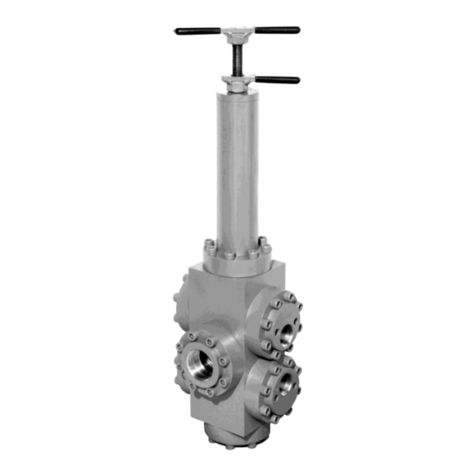
PACSEAL HYDRAULICS
PACSEAL HYDRAULICS KR-150 Maintenance instructions
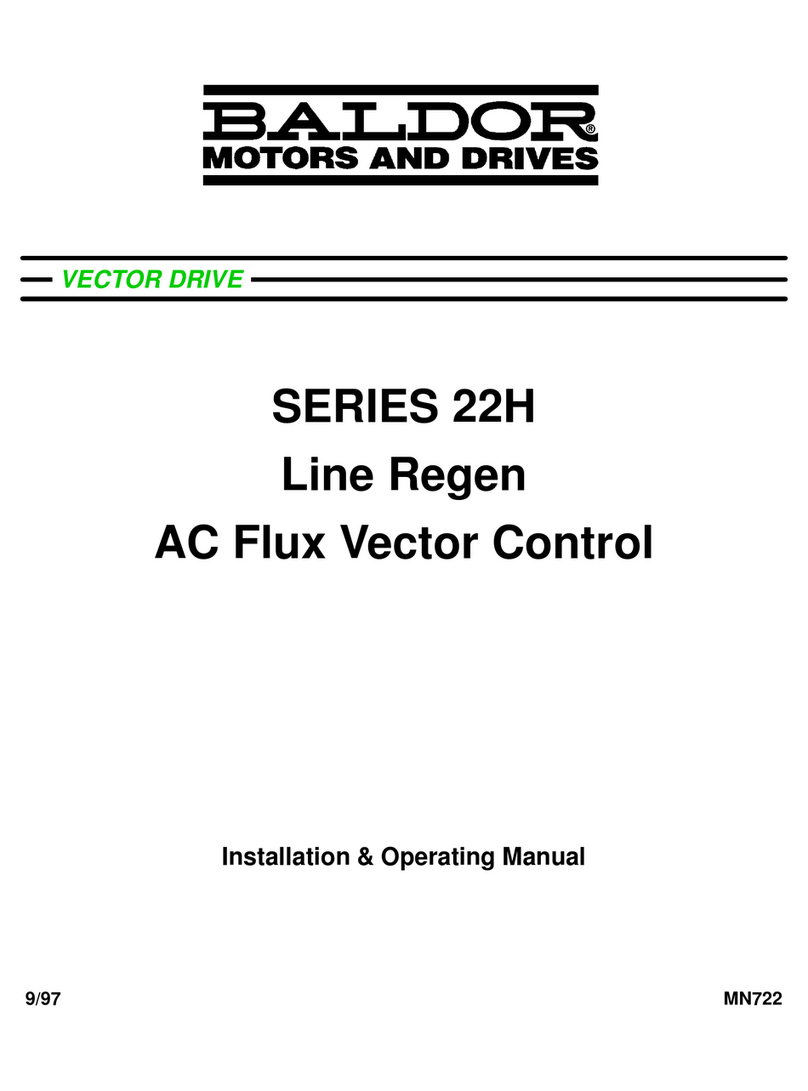
Baldor
Baldor 22H series Installation & operating manual
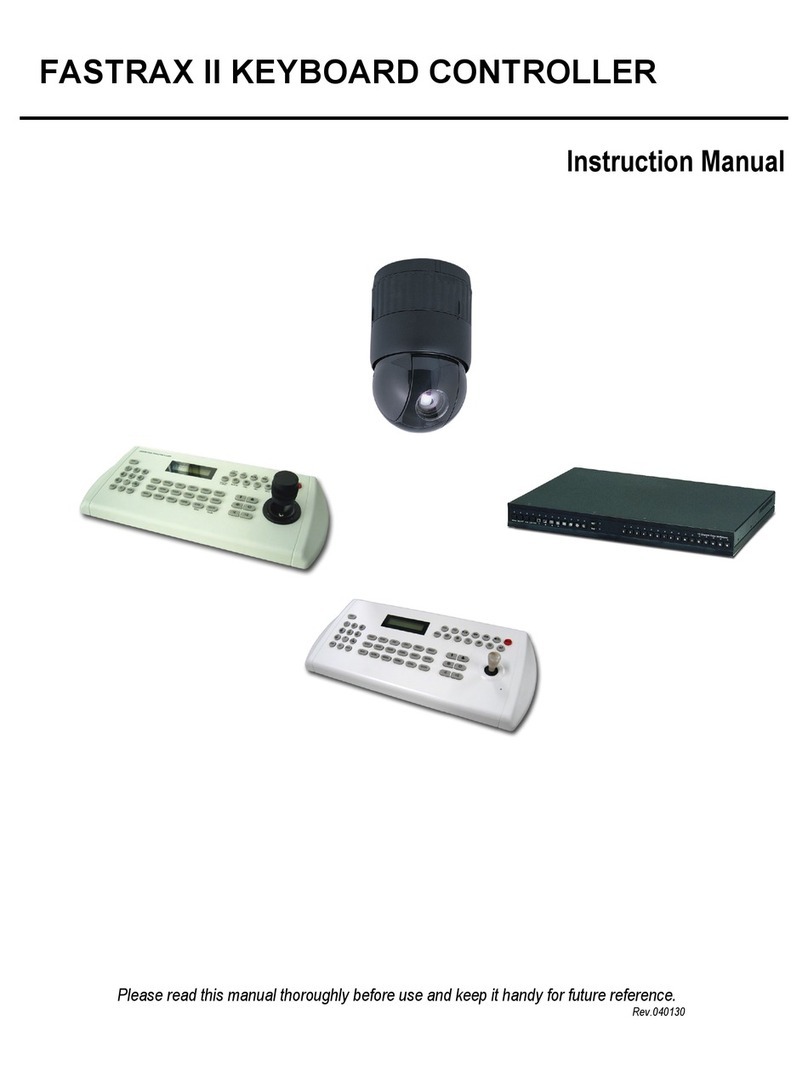
Fastrax
Fastrax II KEYBOARD CONTROLLER instruction manual
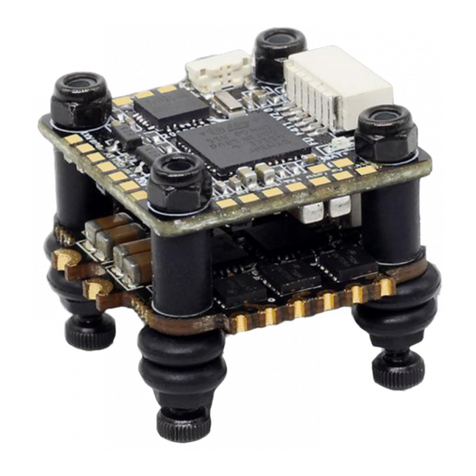
HGLRC
HGLRC FD413 Stack manual
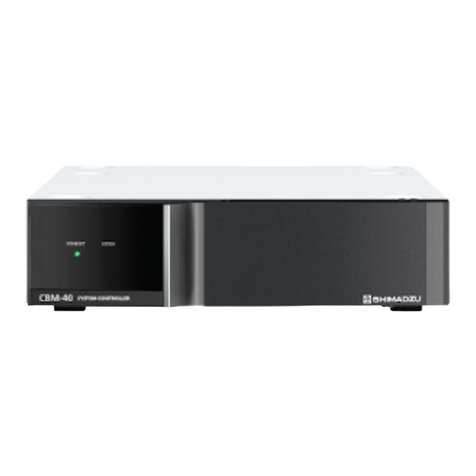
Shimadzu
Shimadzu CBM-40 CL instruction manual
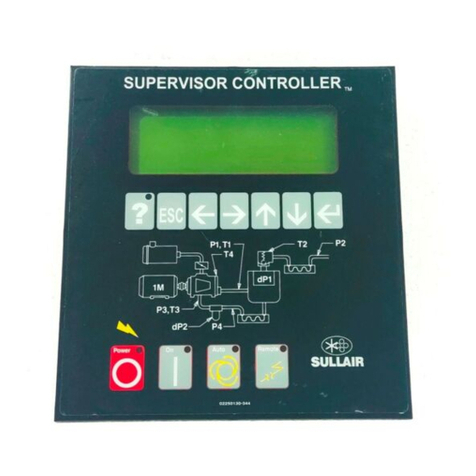
Sullair
Sullair SUPERVISOR CONTROLLER Series instruction manual


